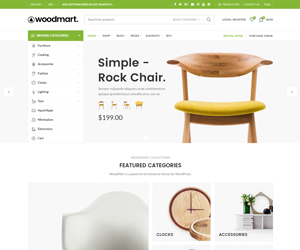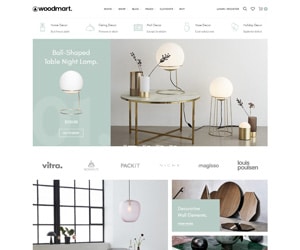how to make a 3d lenticular print

Here is the outline of the article:
how to make a 3d lenticular print
I. Introduction
- What is a 3D Lenticular Print?
- Brief History of Lenticular Prints
II. Understanding the Concept
- Lenticular Vision: How the Human Eye Perceives Movement
- Optical Illusions: The Science Behind Lenticular Prints
III. Components of a Lenticular Print
- Lens Array
- Printed Image
- Camera Obscura Effect
IV. Software for Designing Lenticular Prints
- Overview of Available Software
- Features to Look for in Lenticular Design Software
V. Designing a Lenticular Print
- Planning the Image and Lens Array Layout
- Considerations for Optimal Visual Flow
VI. Creating a Lenticular Print
- Printing and Assembly
- Cutting and Attaching the Lens Array
VII. Techniques for Improving Lenticular Print Quality
- Camera Settings and Angles
- Lighting and Shadows
VIII. Troubleshooting Common Issues
- Common Mistakes and How to Fix Them
IX. Advantages of 3D Lenticular Prints
- Immersive Experience
- Marketing and Advertising Opportunities
X. Applications of 3D Lenticular Prints
- Entertainment (Games, Movies)
- Education and Training
- Marketing and Advertising
XI. Conclusion
- Recap of Key Points
XII. Frequently Asked Questions
- Q1: What is the cost of making a 3D Lenticular Print?
- Q2: Can I create a 3D Lenticular Print with any image?
- Q3: How do I troubleshoot issues with my Lenticular Print?
- Q4: Are there any restrictions on the size of the Lenticular Print?
- Q5: Can I create a 3D Lenticular Print without a special printer?
And here is the article based on the outline:
How to Make a 3D Lenticular Print
Are you curious about creating a mind-bending, 3D lenticular print? These mesmerizing visuals have been used in everything from advertisements to educational materials, and now you can learn how to make your own.
What is a 3D Lenticular Print?
Before we dive into the world of lenticular prints, let’s define what they are. A 3D lenticular print is a visual representation that appears to move or change when viewed from different angles. This is achieved by layering images on a lenticular lens array, which refracts light to create a three-dimensional effect.
Understanding the Concept
The human eye is able to perceive movement due to its ability to change focus quickly. When we view a 3D lenticular print, our brain combines the different images on the lens array to create the illusion of movement. This is often referred to as lenticular vision.
Components of a Lenticular Print
A 3D lenticular print consists of three main components: the lens array, the printed image, and the camera obscura effect. The lens array is a key component, as it refracts light to create the 3D effect. The printed image is layered on top of the lens array, and the camera obscura effect is what gives the illusion of movement.
Software for Designing Lenticular Prints
There are several software options available for designing 3D lenticular prints. When selecting software, consider the following features: ease of use, resolution options, and customization capabilities. Some popular software options include LenticularMaker, LenticularCreator, and Stereoscopic Composer.
Designing a Lenticular Print
When designing a 3D lenticular print, consider the layout of the image and the lens array. A well-planned design will ensure a smooth visual flow. Additionally, think about the optimal camera angles and lighting for your design.
Creating a Lenticular Print
To create a 3D lenticular print, start by printing and assembling the lens array. Then, cut and attach the printed image to the lens array. Use a camera and take photos from different angles to create the desired effect.
Techniques for Improving Lenticular Print Quality
To improve the quality of your 3D lenticular print, experiment with different camera settings and angles. Lighting and shadows can also have a significant impact on the overall effect.
Troubleshooting Common Issues
When working with 3D lenticular prints, it’s common to encounter issues with the image appearing blurry or distorted. To troubleshoot these problems, adjust the camera settings, lens array spacing, and lighting conditions.
Advantages of 3D Lenticular Prints
One of the major advantages of 3D lenticular prints is their immersive nature. When viewed, these prints create an engaging and memorable experience for the viewer. Additionally, they can be used as a powerful marketing and advertising tool.
Applications of 3D Lenticular Prints
3D lenticular prints have a wide range of applications. In the entertainment industry, they can be used in video games and movies to create engaging visuals. In education and training, they can be used to enhance the learning experience. And in marketing and advertising, they can be used to capture the attention of potential customers.
Conclusion
With the basics of 3D lenticular prints covered, you’re now ready to create your own. Whether you’re an artist, educator, or marketer, the possibilities are endless. By understanding the concept and components of 3D lenticular prints, you’ll be able to create mesmerizing visuals that will capture the attention of your audience.
Frequently Asked Questions
Q1: What is the cost of making a 3D Lenticular Print?
A1: The cost of making a 3D lenticular print will depend on the materials and software needed. As a rough estimate, the cost of a lenticular print can range from $50 to $500 or more.
Q2: Can I create a 3D Lenticular Print with any image?
A2: While it is possible to create a 3D lenticular print with any image, the best results are achieved with images that have a high contrast ratio and well-defined edges.
Q3: How do I troubleshoot issues with my Lenticular Print?
A3: Common issues with 3D lenticular prints can be troubleshooted by adjusting the camera settings, lens array spacing, and lighting conditions. Experimenting with different techniques can also help to resolve issues.
Q4: Are there any restrictions on the size of the Lenticular Print?
A4: There are no hard and fast rules regarding the size of a 3D lenticular print. However, the size and complexity of the print will affect the difficulty and cost of creation.
Q5: Can I create a 3D Lenticular Print without a special printer?
A5: Yes, it is possible to create a 3D lenticular print without a special printer. Many standard printers can be used, provided the image is printed at a high resolution and the lens array is correctly positioned.
















